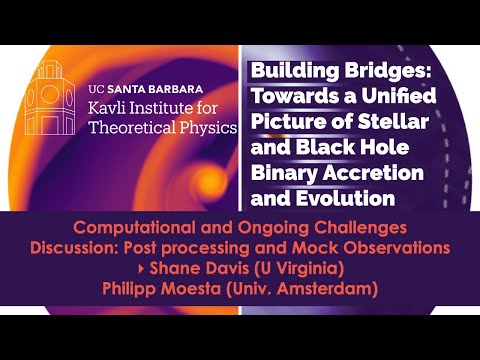Description:
Explore post-processing techniques and mock observations for binary systems in this 52-minute conference talk from the Building Bridges conference at KITP. Delve into the evolution and influence of circumbinary gas on embedded binaries, from stellar to supermassive black hole systems. Learn about observational signatures, numerical modeling techniques, and the similarities between problems at varied astrophysical scales. Gain insights from speakers Shane Davis and Philipp Moesta as they discuss motivations, 2D simulations, steady states, Monte Carlo methods, fast periods, eccentricity, retrograde orbits, softening, numerical relativity, and predicting observables for AGN. Understand the challenges and opportunities in unifying the picture of stellar and black hole binary accretion and evolution.

Post Processing and Mock Observations - Shane Davis, Philipp Moesta
Add to list
#Science
#Astronomy
#Astrophysics
#Mathematics
#Applied Mathematics
#Monte Carlo Methods
#Computer Science
#Binary Systems
#Physics
#Numerical Relativity